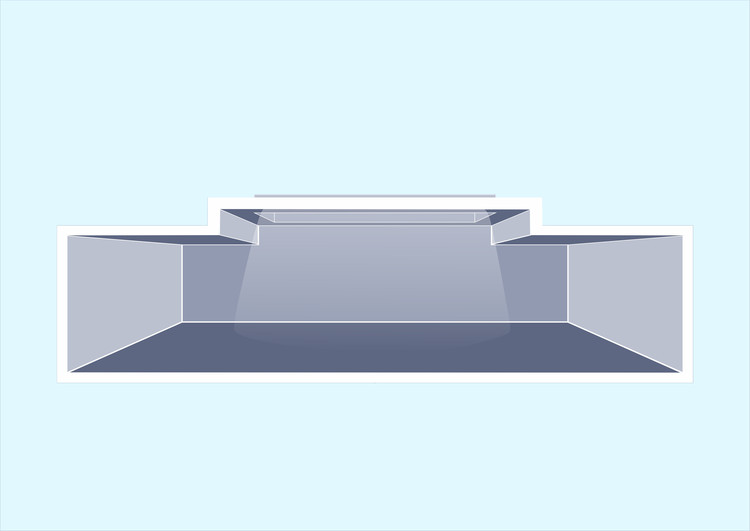
There is nothing more rational than taking advantage of natural lighting as a guarantee to improve the spatial quality of buildings, as well as saving energy. The awareness of the finitude of natural resources and the demands for reducing energy consumption has increasingly diminished the prominence of artificial lighting systems, forcing architects to seek more efficient design solutions. With this goal in mind, different operations have been adopted to capture natural light.
These systems can also guarantee excellent spatial properties if projected correctly. Below we have gathered five essential systems for zenithal lighting.
Skylights

Established as horizontal openings strategically positioned on the roofs of buildings, skylights allow the direct entrance of natural light into the internal region of the construction. It commonly receives an application of translucent glass on its upper side, allowing a higher percentage of light into the space. They should be used with care, since they tend to favor the gain of thermal loads in the building, increasing the internal temperature. Therefore, they must be strategically positioned and projected regarding dimensions and sealing materials.

As an alternative to the upper sealing, they can receive a layer of laminated glass or polycarbonate to allow light to enter indirectly and reduce the light percentage. Being one of the most used zenithal lighting systems, they are recommended for less permanent spaces, such as circulation areas, halls, or bathrooms for example.
In addition, these skylights range in a large number of models and vary in design, dimension, and material, from the traditional opening on the slab to more complex tubular models.
Sheds

Recurrently used in industrial buildings and warehouses that have metal roofs, this type of lucarnes are configured as devices based on the sawtooth geometry of the roofs, with inclinations strategically arranged to receive a certain amount of light. They are usually positioned in relation to the facade with less sunlight (south in the southern hemisphere and north, in the north), allowing natural light without direct sunlight. In some cases, they also contemplate openings to ventilation.

Its variations in terms of dimensions and inclinations are designed based on the luminous percentage requirement of the interior space, allowing a greater or lesser light input. In this system it is essential to close by glass frames, preventing infiltrations from the rains.
Lanternins

Conformed by openings that protrude in relation to the roof, they can appear as small roofs superimposed on the ridges, creating small glazed projections that receive the entrance of natural light through their two sides.

In addition to the light input, the system allows the continuous renewal of the air if mobile frames are used, allowing constant changes from the assumption that hot air tends to rise.
Domes

Domes provide a more far-reaching lighting effect compared to the previous cases. However, due to the large dimensions assumed, in most cases, they tend to generate large thermal loads inside the buildings. Therefore, they are generally used in short-term spaces, such as circulations, courtyards or central areas.
.jpg?1528210834)
Atriums

As well as skylights, atriums open directly on roofs, in most cases with pyramidal or gabled geometries, built with metal profiles and a glass closure. Contrary to the aforementioned cases, this typology is recommended for buildings with a greater number of floors, allowing the entry of a greater luminosity without generating high thermal loads.

Solar Tubes
.jpg?1528389055)
As well as skylights, solar tubes can be installed in different types of roofs, flat or inclined. With a variety of lengths and widths, they can be flexible or rigid. The difference is that they carry light through reflections, in spaces and roofs where it is not feasible to install systems such as those above.
Internally the tubes are coated with reflective materials, generating different light intensities as a result of their dimensions and materiality, and presenting an optimal solution for industrial and commercial projects. There are also fiberglass models, marketed especially for projects with short distances between the sky and the slab, as homes or smaller buildings.


